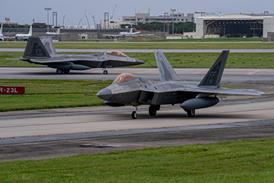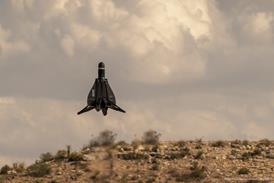Ramon Lopez/WASHINGTON DC

Release of the US Army's much anticipated 2000 Aviation Force Modernisation Plan has set in train the final phase of a process which will establish the future pattern of the service's helicopter purchases.
While the report endorses army wishes to push ahead with buying 1,213 Boeing/Sikorsky RAH-66 Comanche helicopters, many observers remain convinced that budget constraints will lead to an extensive programme revision.
In any event, the impetus for change will come not from the modernisation plan but from a working group recently ordered to survey the reliability and sustainability of the army's entire aircraft fleet. Based on their findings, due shortly, "the US Army will set new requirements and make cognitive decisions based on the cost estimates and warfighting needs of the future force structure," says Lt Col Pat Garman, a Department of the Army systems co-ordinator.
To be determined, for example, is the ultimate number of Boeing AH-64A Apache attack helicopters that will be upgraded to the more-capable AH-64D Apache Longbow configuration. As it stands, only 600 of 743 AH-64As will be remanufactured. Final numbers will probably depend on a decision on Comanche production.
Another outcome will be refinement of the retirement schedule for ageing rotorcraft such as the Bell Helicopter AH-1 gunship and UH-1 light utility helicopter.
Brig Gen Craig Hackett, the army's director for requirements, believes "the task force will present issues that will need to be resolved. We will not be able to define the plan until we assess the overall fleet." Garman says the task force report is "the last major analysis needed to close out this aviation modernisation plan."
The procurement scheme and, in particular, the $38.2 billion Comanche reconnaissance and light attack helicopter programme, must then pass muster with US lawmakers, many of whom do not believe that the army has the resources for its ambitious modernisation plans.
The building block for army aviation is the new Multi-Function Battalion (MFB), the basic helicopter warfighting unit consisting of 10 RAH-66s, 10 AH-64Ds and 10 Sikorsky UH-60 Black Hawk transport helicopters. Restructuring plans envisage four Corps will include an aviation combat brigade and an aviation combat support brigade. The combat brigade will consist of three MFBs, an unmanned air vehicle (UAV) company and support from an Aviation Intermediate Maintenance Company (AVIM) from the Corps AVIM battalion.
Meanwhile, each division aviation brigade will include two MFBs, a UAV company, a divisional cavalry squadron, supported by an AVIM company from the division aviation support battalion. Each division-level MFB includes 10 additional Black Hawks from the reserve forces. The cavalry unit will have 12 RAH-66 Comanches.
As it stands, all AH-1s will be retired by fiscal year 2001 and Bell Helicopter OH-58Cs and UH-1s are to be mothballed by FY2004.
Under the modernisation plan, AH-1s will go out of service when OH-58C scout helicopters are transferred to Army National Guard aviation units. The OH-58C will be used until Apaches reach the aviation reserve units. The OH-58D Kiowa Warriors will be retained until the Comanche arrives in FY2007, but all will be retired by FY2013.
The army plans to further modernise 300 of 431 Boeing Chinook helicopters by 2013 to the CH-47F configuration at a cost of $3 billion. The CH-47F is set for modernisation from FY2002 (11 aircraft) and FY2003 (17 aircraft). Full-rate output schedules call for 27 aircraft in FY2004, 29 in FY2005 and 29 aircraft in FY2006 and beyond. Meanwhile, the fixed-wing Aerial Common Sensor (ACS) is the planned successor to the Guardrail (Raytheon RC-12) and the Airborne Reconnaissance Low (de Havilland DHC-7A)
The Black Hawk programme now calls for up to 900 UH-60As to be upgraded to UH-60L Plus standard from 2003. This programme will extend the UH-60A's service life until FY2025. Another 357 will be converted to theUH-60Q medevac configuration, while 255 UH-60Ls will become UH-60Xs from 2008. The X-model Black Hawk programme is being developed for high priority UH-60s to address the range, lift, and mission equipment requirements needed to conduct utility, command and air assault missions.
Critics have warned that the army's move to establish a lighter, more rapidly deployable force is unachievable without serious sacrifices. The planned restructuring, known as Army Vision, includes replacing heavy tanks with lighter armoured vehicles. Senior army officials say the effort will force a number of "tough decisions" on equipment and budget, and they have no good answers on how much this change will cost. Garman says: "There will come a time when individual weapons systems, including aircraft, will compete (for funding). The army will then have to set its priorities."
It was proposed that Comanche production be halved to achieve savings. But in the end, army leaders backed the RAH-66, which they consider "the centerpiece of the aviation modernisation plan".
The army leadership says the aviation modernisation plan "serves as a compass-that lays out a direction for Army Aviation in concert with the Army Vision". One critic, concerned about the army's ability to pay the modernisation bill, says the army needs the compass because they have lost their way in aviation.
Source: Flight International























